Solar vs. Generator (Future-Proof Your Home!)
Can you imagine going a single day without consuming a single kilowatt-hour of electrical energy?
Even if you choose to live off the grid, you still have devices that need power – the lights at night or your phone and laptop. The modern world feeds on electricity, but you can choose where you get your power.
Solar power vs. generator?
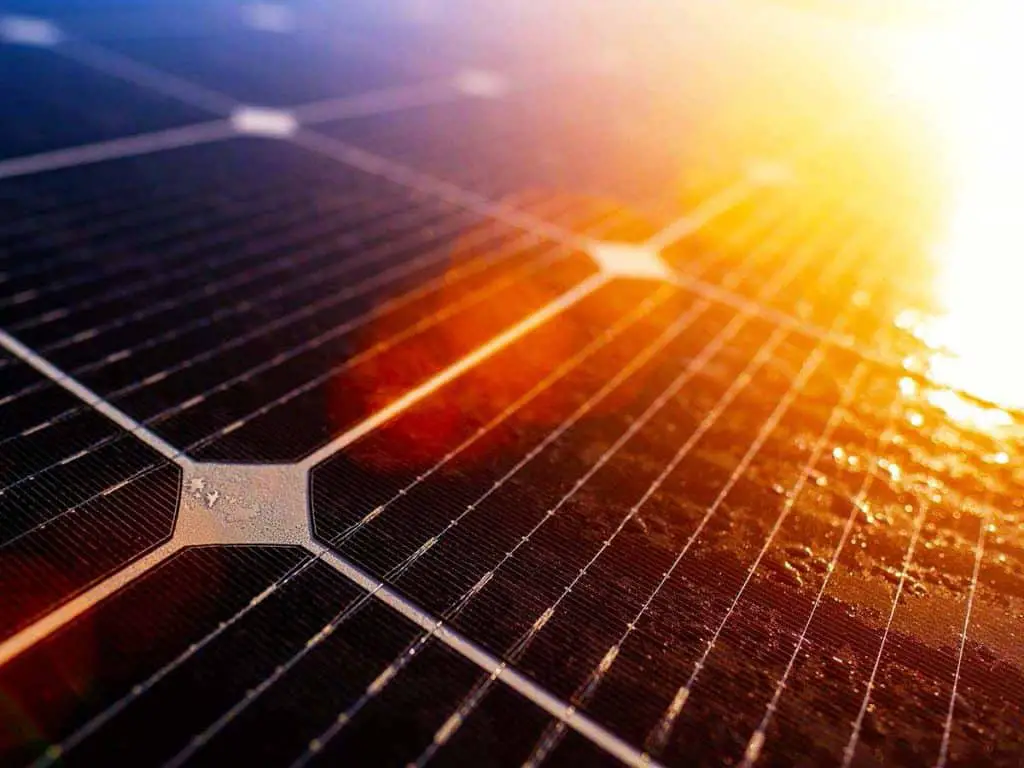
What is Solar Energy?
The sun burns hydrogen, and this process releases massive amounts of light and heat. A small portion of this energy reaches the Earth and provides everything we need for life to exist on this planet.
Without getting too technical, you can regard the light from the sun as particles (photons) or electromagnetic waves (light covering the visible and invisible spectrum). You do not need to understand quantum physics to appreciate that the sun gives us solar energy in the form of light and heat.
The sun’s light and heat shower the Earth in free solar energy that warms the sea and soil, plus it fuels plant growth.
What is Solar Power?
You can convert the sunlight from light into an electric current using photovoltaic cells that turns photons into a pulse of electricity.
Alternatively, you can use a system of mirrors to concentrate the sun’s heat and generate electricity through a different process.
When solar energy converts to electricity, you get solar power to charge your devices’ battery and keep electrical appliances running.
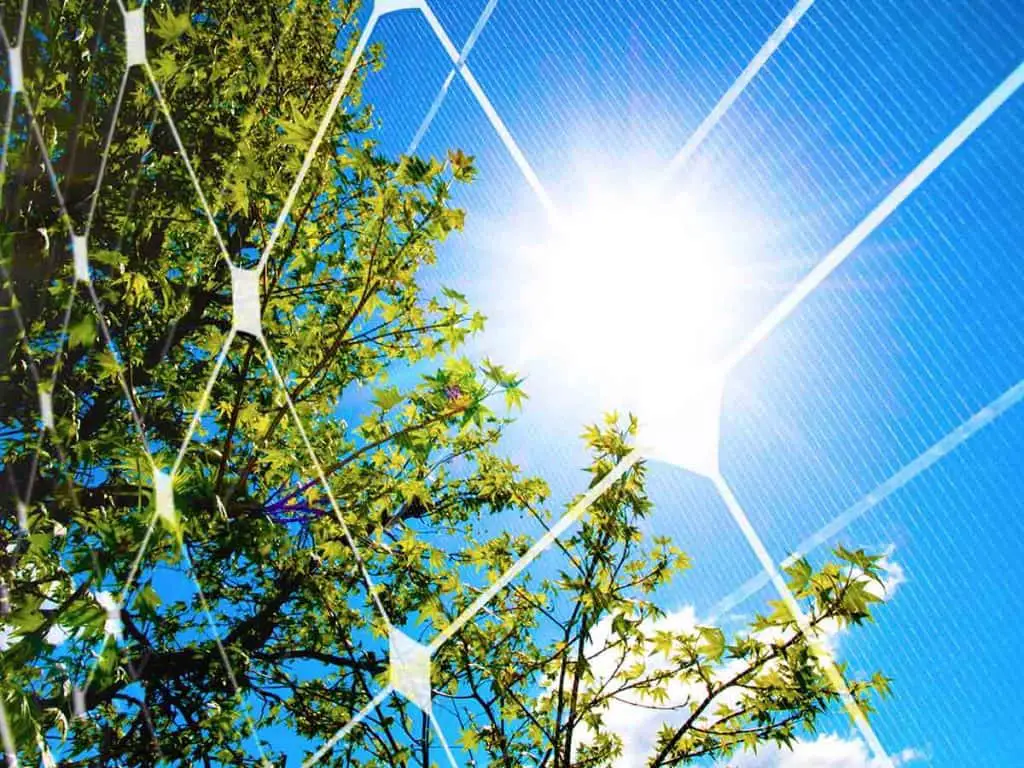
What is the Difference between Solar Energy vs. Solar Power?
Solar energy is the sun’s heat and light. It is available during daylight hours and in good weather conditions but not practical for heating or lighting your home during the night unless you convert it into electrical energy or solar power. Solar energy vs. solar power is the difference in useability between sunlight and an electrical current.
Solar energy will transfer heat to the water for a solar camping shower if you put the water sack in sunlight for several hours. Plus, you must use the water when it is still warm; otherwise, you lose the benefit.
Solar power can heat the water to a hot temperature in the middle of the night using electric heating. Solar power is more flexible and useful than solar energy for modern life.
What is a Power Generator?
A power generator is a device that transforms chemical or mechanical energy into useable electricity. A combustion engine is a form of power generator that uses pistons’ movement to create the electricity to run the car.
How does a power generator work?
Portable and larger power generators burn fuel (diesel or propane gas) to create heat to run the engine using the same principle. The energy in the heat converts to mechanical energy. The mechanical energy in the moving parts converts into electrical energy by generating a magnetic field and creating voltage differences.
Power generators are reliable sources of energy for remote homes, caravans, hospitals, and any other building or process that needs electricity separately from the state power grid.
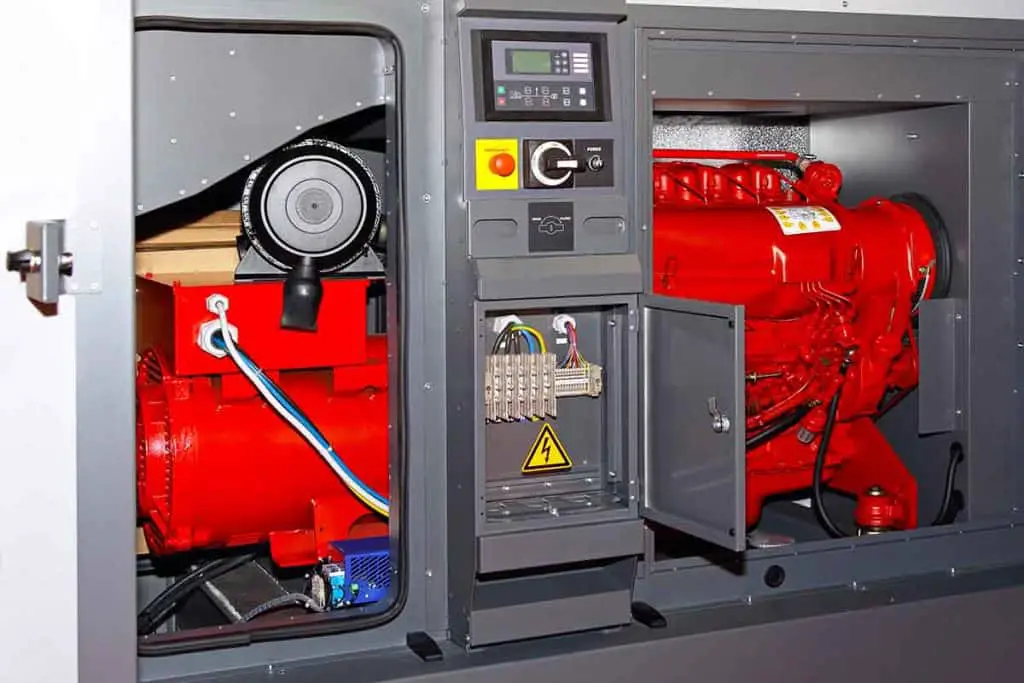
Solar Power vs. Power Generator
If you want to live off the grid, are you better investing in generating solar power or using a power generator?
Solar Power Pros:
- Solar power is a renewable resource, and once you have invested in the infrastructure, you have a relatively maintenance-free source of power for years. A power generator needs fuel to operate.
- Solar power is clean -you are not burning fossil fuels, and there are no toxic emissions.
- Solar power is quiet and does not contribute to noise pollutions.
- Solar power does not involve an engine, so you don’t have the risk of a technical breakdown or running out of fuel to power the motor. Power generators require regular maintenance.
Solar Power Cons:
- You only generate solar power when the sun is shining on your solar panels. You cannot convert solar energy at night, and your power generation goes down on rainy days. A power generator works in all weather conditions and at night.
- Power generation matches the number of solar panels you can afford and the space available to deploy them. A generator puts out power to the machine’s maximum capability.
- Solar power is slow to charge up the batteries to the point where you have useable power, and you can’t plug your devices straight into the solar panels. A power generator is fast at charging batteries, and you have the option with some models to power a device or lighting system from the generator directly.
If you are setting up an off-the-grid house, common sense indicates that a hybrid approach of having solar power and a back-up generator is the best option.
You may have sufficient access to solar energy to power your home all year round, but if you live in a remote area with the risk of freezing winters, a generator can save your life in a weeklong blizzard.
Alternatively, you need an extensive array of solar panels and sufficient battery storage to meet your winter needs from stored energy.
How Do Solar Panels Work?
Solar panels work because of the photovoltaic effect. Photovoltaic materials take light and convert it to electricity – this process happens at the atomic level.
The process is old – in 1839, a French scientist Edmund Becquerel spotted that light falling on some materials resulted in electricity.
The first photovoltaic module was built in 1960, but the Space race drove the technological development of affordable and reliable solar panels.
What is a solar panel made up of?
A solar panel is a collection of solar cells or photovoltaic modules connected electrically. The photovoltaic material is usually a semiconductor (like silicon or a metal alloy like Copper Indium Diselenide). Sunlight provides enough energy to free electrons in the material, and these electrons provide the electric current. Silicon as a thin film or amorphous layer is the semiconductor material in most commercial solar panels.
The solar panels work best with maximum sunlight for many hours, either mounted on a roof or the ground. More expensive systems track the sunlight and tilt the panels (like a plant tilts its leaves) to generate more power throughout the daylight hours.
The generated electric current is a direct (unidirectional) current, and the array needs a converter to change the current into an alternating current.
Most systems use solar power to charge batteries, so your home has a consistent electricity supply for day and night usage.

Types of Solar Panels
Solar panel technology continues to evolve to create smaller panels with greater efficiency.
In the commercial sector, you come across these types of solar panels:
1. Monocrystalline Solar Panels (Mono-SI)
These are First Generation or older solar panels, but they have excellent efficiency (around 20%) with a uniform dark appearance, and they are less susceptible to higher temperatures reducing their efficiency.
They are more expensive to manufacture than the alternative First Generation solar panel – polycrystalline or poly-SI.
The solar cells use slices of single-crystal silicon – cut in hexagonal wafers.
You expect thirty years of energy production from these solar panels. Although they are initially more expensive, they have staying power.
2. Polycrystalline Solar Panels (Poly-SI)
These are less efficient than Mono-SI at around 15%, bulkier, and are sensitive to higher temperatures with degraded performance.
Molten silicon poured onto the panel substrate crystallizes, so each cell has many tiny crystals. The appearance is a speckled blue mosaic effect.
There is less waste, and they are quicker to fabricate than Mono-SI panels. Although less efficient, these are more eco-friendly because of reduced energy in manufacture and minimal waste products.
3. Thin Film Solar Panels
The thin-film solar panels use thin layers of light-absorbing material – about 350 times thinner than the silicon layer in first-generation solar panels.
Currently, there are four types of thin-film solar panels:
- Cadmium Telluride (CdTe) – about half of thin-film solar panels use this material. Cadmium is a toxic material, but this is only a factor in eventual disposal.
- Amorphous Silicon (A-SI) – like standard silicon solar cells but not as efficient (7-10%). Useful for small consumer electronics rather than larger-scale power generation.
- Copper Indium Gallium Selenide (CIGS) – better efficiency at 22.4% in the laboratory but not produced on a large scale (yet).
- Gallium Arsenide (GaAs) – super efficient at 28.9% and super expensive. These are the solar panels on satellites and spacecraft.
Thin-film solar panels are quick and easy to install, but you need a larger roof area because they are less efficient or too expensive.
These solar panels are best for solar farms or to power more significant buildings like schools and hospitals.
4. Concentrated PV Cell (CPV)
By concentrating sunlight on a high-efficiency solar cell, you get maximum power in a shorter timeframe.
These panels are three times more effective than standard solar panels, but they are expensive because you need a solar tracker, and you need to keep the panels clean with regular washing.
The advantages include high efficiency (46%), stability at higher temperatures, excellent durability, and on a solar farm, you can use the ground below for crops or grazing.
How Much Do Solar Panels Cost?
Over the past ten years, the price of solar panels has dropped significantly.
You would need to pay around $55,000 for enough solar panels to power an average home at the start of the decade. Today you spend between $16,000 and $21,500 for the same installation, and the technology is better.
The cost of a solar panel system depends on:
- How much power in kilowatt-hours you need per year – a higher power demand needs more panels or more efficiency.
- Type of panel – higher efficiency panels cost more, but you need less of them to meet your power demands.
- Available sunlight – if you get plenty of sunny days, a less efficient and cheaper panel may still meet your power needs.
- Installation costs – placing solar panels on a roof is more expensive (labor and scaffolding) than installing panels on the ground.
In some areas, some green grants and discounts offset the cost of the initial installation. Plus, some countries and States let you sell your excess power to the grid to help your community.
What About Electric Cars?
You buy an electric car because you want to stop relying on fossil fuels.
Then you charge your electric vehicle using energy generated by fossil fuels – would it be better to use solar power and complete the green cycle?
Can you use solar panels to charge an electric car?
To charge your electric car, you need to install a charging station. You can run your charging station from your house supply, but you increase your annual power consumption. You may need to improve your current solar power generation capacity or provide a dedicated car charging solar power system.
It is not practical to plug your electric car into a set of solar channels, and currently, no electric car has integrated solar panels on the roof.
Most people charge their vehicles overnight, and you need to store your solar power in a battery to enable this process.
The best approach is to follow the same system for powering your house by first calculating your energy usage for your typical annual mileage. Then either extend your household system with extra panels and storage batteries or set up a standalone system.
How many solar panels do you need to charge an electric car?
The average car needs around ten solar panels with a battery storage system to provide a solar-powered motoring year.
What About Lithium Batteries?
Most of our devices like laptops, tablets, and phones use rechargeable Lithium batteries.
Can you use solar panels to charge lithium batteries?
Using solar power to provide energy for your appliances and home charging stations does not alter the way you charge your devices. When you charge lithium batteries, it makes no difference to the battery where the electricity comes from, including solar panels, and you don’t need any special adapters.
Your solar power system supplies power to your outlet sockets for you to use as you see fit.
What About Swimming Pools?
Can you heat a swimming pool with solar panels?
Swimming pools use energy for heating the water to a comfortable temperature and pumping the water through a filtration system. You can use solar panels to run both these systems. You need a complete system of solar collector, pump, filter, and flow control valve.
Unless you are an expert DIYer, it is probably best to use a professional to set up the installation.
How many panels would you need?
To use solar power to run your outdoor pool, you need solar panels covering the equivalent of 30-60% of the pool area. You can also help efficiency by using a pool cover to stop heat loss when not in use.
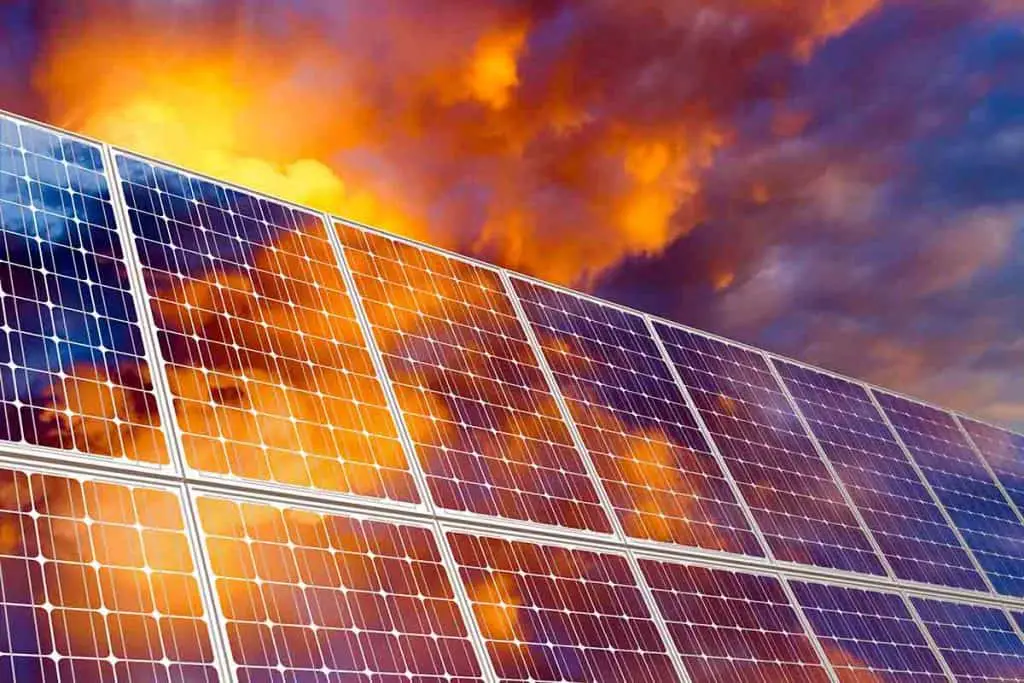
How Many Solar Panels Do You Need?
The number of solar panels you need to power a house depends on:
- Size of house.
- Annual energy usage.
- Available sunlight.
- Solar panel efficiency.
If you want to power an off-the-grid house, you can opt to install your solar panels on the roof or the ground as a personal solar farm. The best option for you depends on where you get the most sunlight and how much space is available.
How many solar panels do you need to power a house?
The average American home uses around 11,000 kWh per annum. Using 280-watt solar panels, you need about 21-34 to cover your energy needs.
Although your home’s size is an indicator of potential energy use, one person living in a large house may use far less than a family in a smaller place with every member wanting to run a TV, laptop, and numerous other appliances.
Peak sunlight is when your solar panels are most efficient, and it varies with each State and your house’s cardinal direction.
You can find out peak sunlight hours from the National Renewable Energy Laboratory (source) data sets with a visual map showing relative daily sunlight availability.
Less sunlight means you need more panels for power generation to meet the same level of power demand – a crucial question for homebuyers and homeowners looking to upgrade.
To calculate your solar panel needs:
Number of solar panels = (monthly electric usage in watts/monthly peak sunlight hours)/ solar panel wattage.
It is always best to build in either some excess capacity or some room for growth if you choose to add a hot tub or an electric car to your home grid at a later stage.
Solar System for Air Conditioning
How many panels to power an air conditioner?
You can power a single air conditioning unit for a small office or RV with one 250-watt solar panel and some power to spare. Central air conditioning for your home consumes around 1000 kWh per year, and that will need 3 or 4 solar panels at 250 watts each.
The exact number of solar panels for your air conditioning system will depend on the power usage, solar panel type, and the amount of sunlight in your region.
Solar System for Swimming Pool Pump
Calculating the number of solar panels for your swimming pool pump or any other device is straightforward:
Number of solar panels = (Voltage Rating X Amperage Rating X Daily Usage Hours X working days)/ solar panel wattage.
Solar System for Home
You can either look at your energy bills for a year or perform a more extended calculation of working out your annual energy consumption for your lighting, ventilation, and devices.
Simple tasks such as changing your ceiling fan direction and using motion-sensor lighting help reduce energy consumption and solar system requirement.
In most cases, using an estimate for an annual energy bill is the quickest approach with additional capacity if you have enough scope in your budget.
Future of Solar Energy
Solar energy is a free resource available worldwide. Increasing solar panels’ efficiency and reduced production cost mean converting solar energy into solar power is increasingly attractive.

Solar Power vs. Wind Power
Wind results from solar energy heating parts of the Earth’s surface, causing air movements. A wind turbine converts the kinetic energy of wind into electricity.
Wind and solar energy share the following pros:
- Reducing air pollution because they don’t burn fuels.
- Suitable for individual homes and large-scale production.
- Excellent for energy supply in rural areas.
- Sustainable forever as you can’t run out of sun or wind.
Both energy sources also share some cons:
- Power generation is weather-dependent.
- Still generate some pollution in manufacture and disposal.
- Use expensive and rare materials.
- Some people regard the panels and turbines as blots on the landscape.
The advantages and disadvantages between solar and wind energy include:
| Solar Energy | Wind Energy |
| More predictable and consistent, but you can’t generate solar power overnight. | The wind may be unpredictable, but it blows night and day. |
| Relatively straightforward and cheaper to install on buildings. | More complicated and expensive to install. |
| Suitable for individual homes and small buildings in densely-populated urban settings or large-scale production. | Only suitable for offshore installation in vast open areas. |
| Need not be connected to the power grid. | Requires transmission line installation from wind farms to the grid. |
| Installation is less conspicuous and requires less space. | Massive structures that require more space. |
| The operation does not generate noise. | The operation generates some noise. |
| Less susceptible to damage from lightning and high winds. | More susceptible to damage from lightning due to its height. |
| Does not kill or injure birds. | May injure or kill birds. |
| Solar panels consume more energy but produce relatively less power. | Wind turbines consume less energy but produce more power. |
| Releases more CO2. | Releases less CO2. |
| A sustainable and cleaner source compared to fossil fuels. | A sustainable and cleaner source compared to fossil fuels. |
In practice, most countries opt for a mixture of solar and wind power in meeting their population’s energy needs.

Solar Power vs. Nuclear Power
Few topics cause as many arguments as the competition between solar power and nuclear power.
How does nuclear power create electricity?
Nuclear power uses a nuclear reaction to generate heat. The heat creates steam that drives a turbine to convert mechanical energy into electricity.
Nuclear power is a large-scale exercise – no one powers a tiny home with an individual nuclear reactor.
When comparing solar vs. nuclear energy sources, consider:
- Time to build – a nuclear power reactor takes longer to build (69 months) than a solar farm (9 months).
- Capital cost – if you compare the cost to build both types of energy plants to generate a kWh of electricity, nuclear power is about ten times the cost of an equivalent solar farm.
- Capacity to generate electricity – nuclear generates electricity while it has fuel, but solar is dependent on weather and shuts down overnight.
- Maintenance – a nuclear power station needs a team to run the process, whereas a solar farm needs little input other than washing the panels.
- Waste material – nuclear waste needs careful management and storage for years after you decommission the plant. A solar farm does not have that legacy issue.
Nuclear wins for consistency but is more expensive and challenging to run than solar farms. On the other hand, a nuclear power plant is more efficient at producing a lot of power from a smaller land site than solar farms.

Solar Power vs. Hydropower
Ancient civilizations exploited running water as a power source for grinding flour. Today hydroelectric plants use moving water to turn a turbine to convert the water’s kinetic energy into electricity.
What are the pros and cons of hydropower?
The plus points of hydropower:
- Clean, renewable energy topped up by rain and snowfall.
- Excellent at meeting large-scale power surges in energy usage.
- Highly responsive – you can switch them on and off as necessary.
- Automated with low running and maintenance costs.
- Long life cycle running for decades.
The downsides of hydropower include:
- Geography and water availability dictate where you can build a plant.
- It damages aquatic life and displaces people in the building stage.
- It changes river ecosystems and stops fish migration.
- High upfront capital cost.
- Adversely impacted by drought.
Solar power when compared to hydropower:
- Has a minimal negative impact on the natural world.
- Fewer geographical restrictions.
- Lower cost and available for individual use.
Hydro energy for off-the-grid homes is technically possible but hugely impractical. You need a suitable water supply, and it is expensive in terms of manufacture and implementation compared with solar or wind power.
Hydropower currently remains a component of large-scale electric grid systems where geography permits its use.
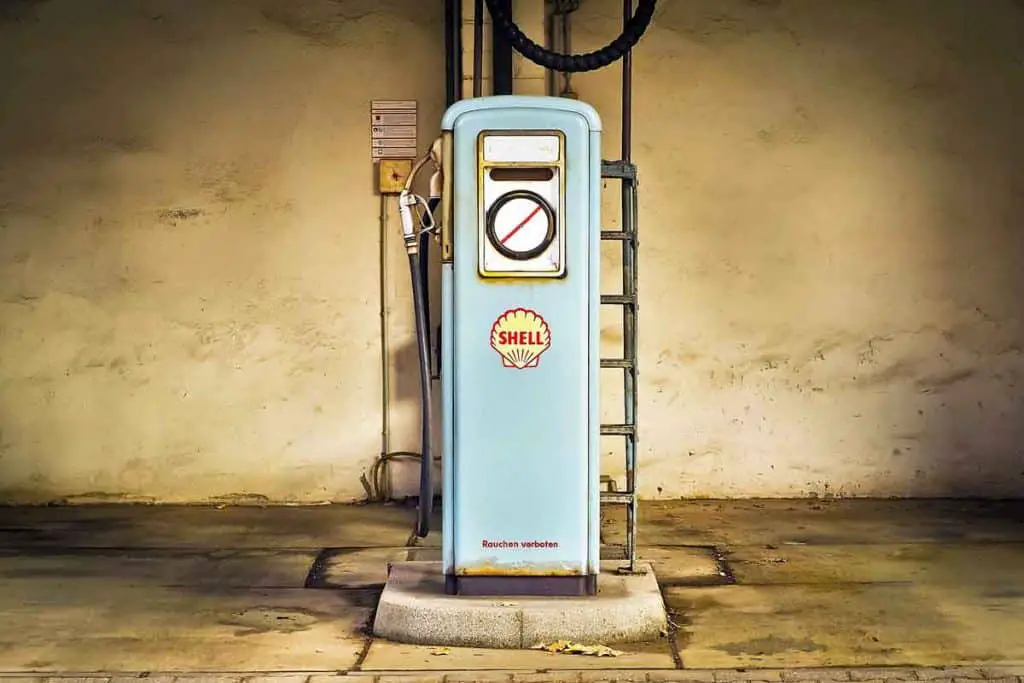
Solar Power vs. Fossil Fuels
Fossil fuels powered the Industrial revolution and kick-started the modern era, but they are a dwindling resource and put a heavy burden on the planet in terms of pollution and climate change.
Coal, natural gas, and oil are cheap and effective in producing energy for conversion to electricity and fueling vehicles for traveling and transporting goods, but they adversely impact the environment.
The drawbacks of using fossil fuels include:
- Drilling and mining destroy the natural environment.
- Fossil fuels are a finite resource that needs extraction and refining before use.
- The burning of fossil fuels pollutes the environment.
- Exposure to price fluctuation in tandem with the economy.
On the other hand, the main advantage of solar power over fossil energy is undeniable:
Solar power comes from a limitless free resource; once you have invested in the infrastructure, it is available to you whenever the sun shines. Solar panels installation may represent an upfront cost, but solar power is renewable and cleaner than fossil fuels.
That said, solar power will not be a complete replacement for fossil fuels on a worldwide scale for many years.
Still, as an individual, an investment in solar panels can supply all your electrical needs for your home, car, and swimming pool if you have enough space to deploy your panels.
